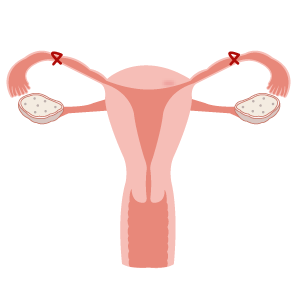
Tubal ligation, commonly referred to as “pagpapatali” in Filipino, is a surgical form of family planning. In this procedure, a woman’s Fallopian tubes are tied or sealed to prevent the union of the sperm cell and egg cell, which is essential for fertilization and the formation of an embryo. When both Fallopian tubes are sealed, the procedure is also known as bilateral tubal ligation (BTL).
How Effective is Tubal Ligation?
Tubal ligation is one of the most effective methods of family planning, with a 99% success rate in preventing pregnancy within the first year after the procedure. The small margin of failure occurs because, in rare cases, the Fallopian tubes can naturally reconnect, allowing fertilization to occur. Despite this, tubal ligation remains a highly reliable method of contraception.
However, it is important to note that tubal ligation does not offer protection against sexually transmitted diseases (STDs) such as HIV/AIDS or gonorrhea. Women are advised to use condoms if engaging in sexual activity with partners whose STD status is uncertain.
Is Tubal Ligation Permanent?
Tubal ligation is considered a permanent solution for family planning. While there are procedures to reverse the operation, these are expensive, complicated, and not guaranteed to restore fertility. For this reason, couples are advised to choose tubal ligation only when they are certain they no longer wish to have children.
How is Tubal Ligation Performed?
Tubal ligation is a simple procedure typically performed by an OB-GYN (Obstetrician-Gynecologist). It can be done as a standalone surgery or alongside other procedures, such as during a Caesarian section or shortly after childbirth. The process involves tying or sealing the Fallopian tubes to prevent eggs from traveling to the uterus.
While the initial cost of the procedure may be higher compared to methods like condoms, it is a one-time expense that can be more cost-effective in the long run for couples seeking permanent contraception.
Considerations Before Undergoing Tubal Ligation
- Permanence. Tubal ligation is irreversible for most women, so it is recommended only for those certain about not wanting more children.
- No STD Protection. It does not prevent sexually transmitted infections, so additional precautions like using condoms may still be necessary.
- Health and Suitability. Consulting with an OB-GYN is essential to ensure that the procedure is appropriate based on your health and family planning goals.
Tubal Ligation vs. Vasectomy
For couples exploring permanent family planning options, vasectomy is the male equivalent of tubal ligation. In vasectomy, the vas deferens, which carries sperm, is cut or sealed to prevent pregnancy. Compared to tubal ligation, vasectomy is less invasive, less expensive, and has a quicker recovery period. For more details, you can refer to related articles on vasectomy.
Final Thoughts
Tubal ligation, or bilateral tubal ligation (BTL), is a safe, effective, and permanent method of family planning. It is an excellent option for women who are confident they no longer wish to have children. While it requires a financial investment upfront, it provides long-term benefits without the need for repeated contraceptive purchases.
As with any medical procedure, thorough consultation with a healthcare professional is crucial to make an informed decision. Understanding your options, the risks, and the implications of tubal ligation will help ensure that it aligns with your personal and family planning goals.


